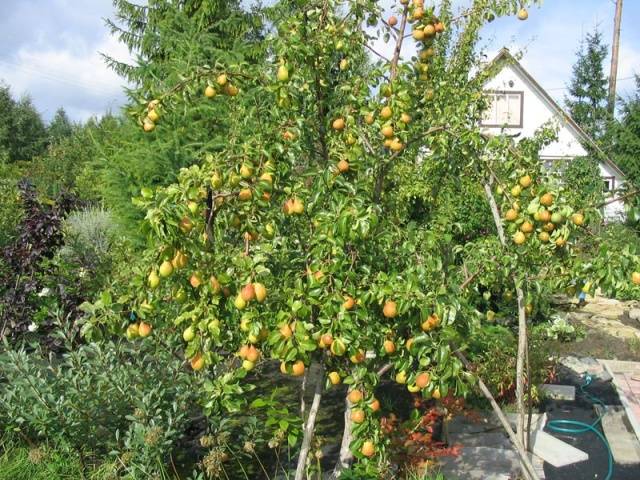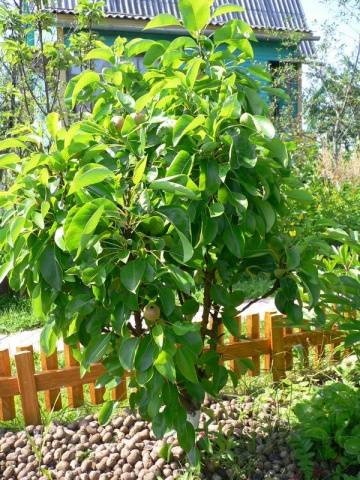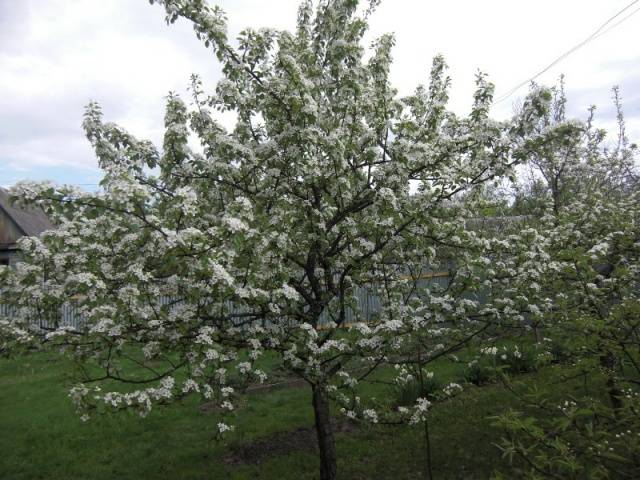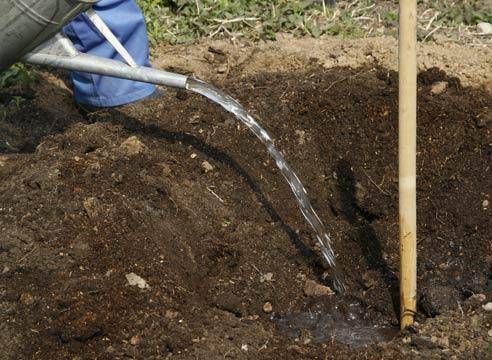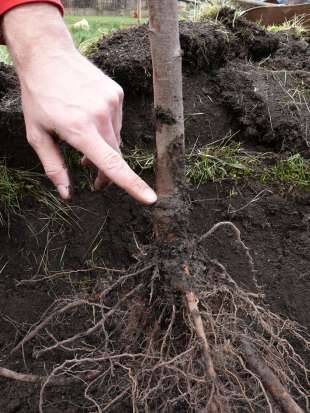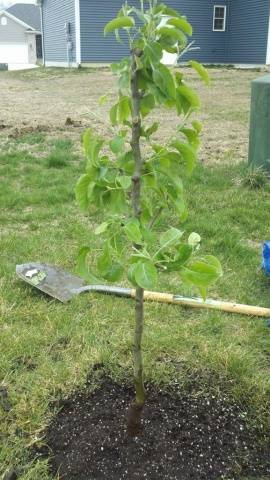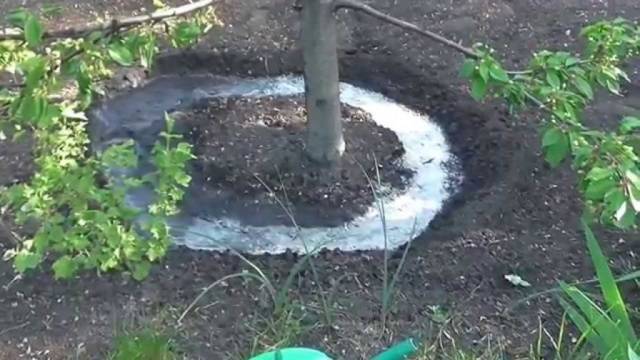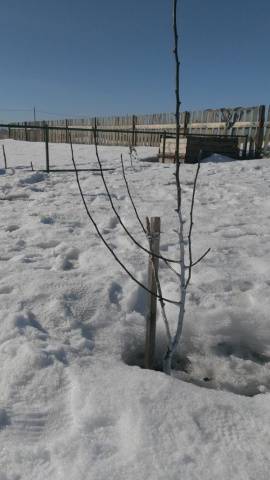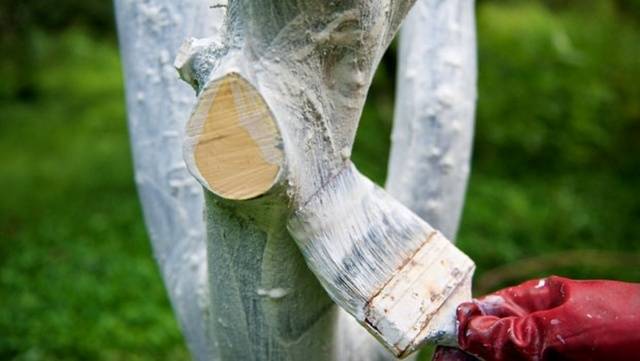Content
Pear Marble was bred more than fifty years ago, but to this day this variety stands out favorably among two hundred competitors - trees with sweet marble fruits are very common in the middle lane. Gardeners love the Marble Pear for its high yield and large sweet fruits, as well as for its good adaptability to the climatic conditions of most regions of Russia. With proper care, the Marble variety can be grown in the south of the country, in the Moscow region, and in the Urals - the characteristics of the variety allow it.
Description of the Marble pear variety, photos and reviews can be found in this article, in addition, it will talk about pollinators, the rules for planting and growing pear trees.
Description of the variety
The Marble pear variety was bred in Russia by crossing the Forest Beauty with the Winter Bere. That is why the tree is perfectly adapted to the climatic conditions of most regions of the country.
The characteristics of the marble pear have the following:
- the tree grows up to four meters in height, has a pyramidal crown;
- leaves are glossy, large, slightly serrated;
- flowers of medium size (up to 3 cm), saucer-shaped, white;
- early flowering time (therefore, the flowers of the Marble pear often freeze slightly in spring);
- the size of the fruits is medium-large - about 170 grams;
- the shape of the pears is correct, the peel of ripe fruits is golden-green, the flesh is creamy, coarse-grained;
- the pulp is very sweet, tender, aromatic (according to a five-point tasting scale, the Marble Pear earned a mark of 4.8);
- the yield of the variety is high;
- the transportability of pears is good, the fruits can be stored for up to two months without loss of quality and taste;
- the ripening period of the Marble pear is late summer, early autumn;
- resistance to diseases and pests is good, the marble variety is susceptible only to powdery mildew;
- fruiting occurs 6-7 years after planting the tree;
- pollinators The Marble variety may not be needed, since the pear belongs to self-pollinated trees (it is recommended to plant this variety next to Tatyana, Lada or Chizhovskaya pears - gardeners' reviews indicate that they improve each other's qualities);
- The winter hardiness of the variety is average - the tree can withstand frosts down to -25 degrees.
The disadvantage of the Marble Pear can be considered poor drought tolerance - the tree needs a lot of moisture, which means that the gardener will have to water it additionally.
Landing rules
In general, this variety is considered unpretentious - the tree will bear fruit in almost any conditions and on any soil. To increase the yield and quality of the fruit, it is recommended to grow the Marble Pear in a well-lit area with fertile and loose soil.
How to check the quality of a seedling
A good and strong pear seedling must meet some criteria:
- The age of the tree should be no more than two years - 1-2-year-old seedlings of the Marble variety are optimal for planting.Older trees suffer greatly during the transplanting process, as they lose more than half of their roots - such seedlings are greatly lagging behind in development.
- The seedling should have 3-5 strong and healthy-looking roots, the length of which is about 30 cm. It is best to adapt in the new place seedlings with roots hidden in an earthen ball - such trees can be planted at any time of the warm season.
- Trees one year old may not have side shoots, but two-year-old seedlings should already be overgrown with three or four side branches.
- There should be no damage or cracks on the bark of the tree, the surface of a healthy seedling, ideally, is smooth and glossy.
The photo below shows healthy seedlings.
Choosing a place and time of landing
You can plant a marble pear both in autumn and spring. If the seedlings are planted in the spring season, you need to wait for a stable heat, since return frosts are detrimental to the Marble variety. It is very important to water the young trees regularly because they are afraid of drought.
In autumn, it is better to choose a period for planting a tree before the onset of severe cold weather and winds. Before the real winter frosts, the root system of the tree must adapt to new conditions and branch out well.
The place for the Marble variety is chosen light, spacious, protected from strong winds. Although the variety loves moisture, stagnation of water will be destructive for the tree, so you need to take care of removing excess water - dig a ditch.
The soil for a pear needs nutritious and loose soil; loam and black soil are perfect. If the composition of the soil is unsatisfactory, it is improved with additives such as humus, peat, sand or compost.
Sequence of actions when planting a marble pear
It is necessary to plant a pear tree as follows:
- A couple of weeks before planting, dig a hole about 80 cm deep, with a diameter of about 60 cm (the size of the hole depends on the size of the tree). The earth extracted from the pit is piled in two piles: the upper and lower layers separately.
- Fertile soil from the top layer must be mixed with organic or mineral fertilizers. For these purposes, humus, wood ash, potassium and superphosphate are suitable. If the soil is problematic, limestone is added to it and drainage is done. Now, nutrient soil is laid on the bottom of the pit so as to fill 2/3 of its volume.
- A support for the tree should be hammered into the center of the pit - a peg 130-160 cm long.
- Inspect the seedling for damage. Weak or diseased roots are pruned with pruning shears, most of the leaves are cut off. If the roots have time to dry, they soak them in a clay mash for several minutes.
- The seedling is placed horizontally in the center of the pit and covered with fertile soil. The root collar of the tree should be 3-5 cm above ground level. If the neck is not visible, you can shake the seedling or pull it up slightly.
- Now the tree is tied to a support, the ground is tamped down and a hole is made with a hoe for watering.
- Immediately after planting, the pear must be watered with 20-30 liters of water. After watering, the soil is mulched with straw, sawdust or dry foliage to reduce moisture evaporation. In the spring, the Marble variety seedling should be watered at least once a week for a month after planting.
How to care for a marble pear
The tree of this variety does not require complex care, it just needs to be watered, occasionally fertilized, and preventive treatment against pests and diseases should be carried out.
In general, the following is needed to care for a pear tree:
- in spring and summer the tree follows water regularlyeven when rainfall is normal.Each pear needs about three buckets of water at weekly intervals. In order for moisture to be absorbed evenly, it is recommended to use the sprinkling technique or to dig a ditch for irrigation about 15 cm deep. The soil around the tree should be regularly loosened, it is better to mulch it.
- If a prune the pear right, new fruit buds will constantly form on the tree, which will increase the yield. Pruning of the Marble tree is carried out in the spring, removing all dried and diseased branches and shortening the shoots by a quarter of the length that has grown over the past year. All cuts should be treated with oil paint or garden varnish to avoid infection.
- All young trees have weak winter hardiness - the roots of pears freeze out even at -10 degrees. Therefore, the land around the Marble Pear should be mulch or shelter before the onset of cold weather. In the northern regions, it is recommended to protect old trees, since the winter hardiness of the variety is average. For greater effect, you can wrap an 80 cm trunk with breathable material (roofing paper, reeds, straw, cardboard, natural fabric). In a snowy winter, snow is scooped up to the trunk, if there is no snow, the pear tree is covered with earth.
- The yield of Marble pear is directly related to the quantity and quality of the dressing. In autumn, until the end of September, the tree is fertilized with nitrogen-containing components. In the spring, pear trees are fed more abundantly, using both organic matter and complexes of minerals. The area where fertilizers are laid out should be comparable in size to the size of the tree crown.
- Pear Marble has good immunity, so it rarely gets sick. But, all the same, the gardener must inspect the tree for fungus or scab, and treat pests several times a season.
- At the end of August, you can start harvesting... The fruits ripen well when plucked, they are stored for about two months. Reviews about the taste of the fruit are only positive.
Feedback
Conclusion
Description, photos and reviews about the Marble Pear should help the gardener decide and decide whether to purchase seedlings of this variety.
As practice shows, trees of this variety do not always grow without problems: some gardeners note their predisposition to diseases, someone's pear often freezes or does not bear fruit well. Much here depends on the climate and soil composition, as well as on the correct agricultural technology.

